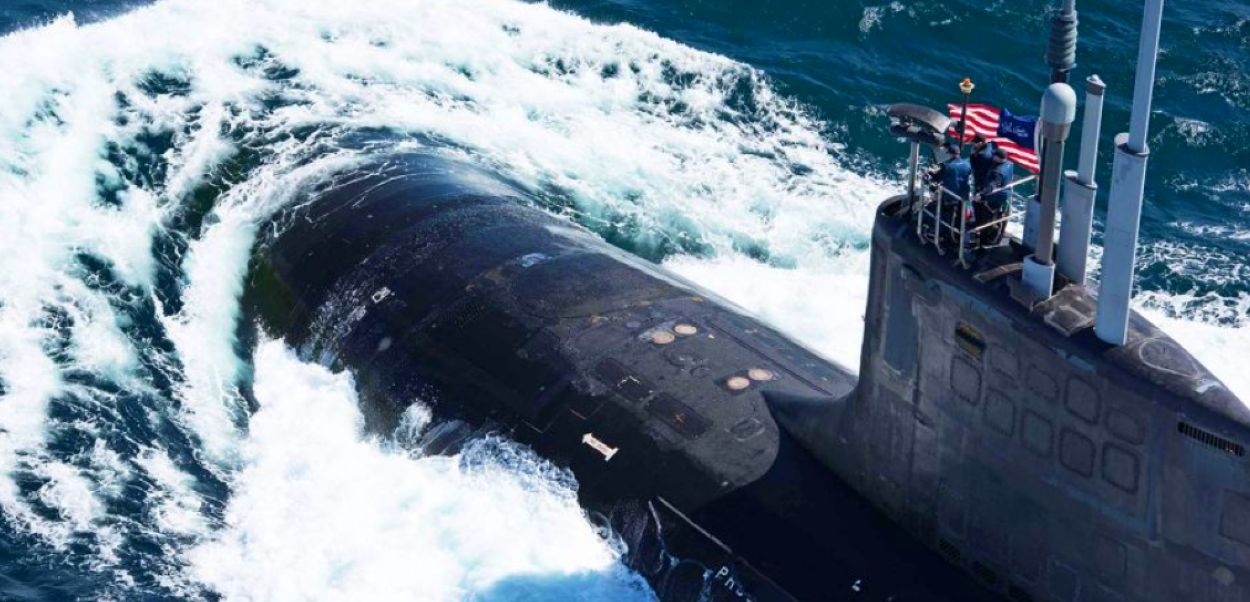US nuclear submarines can begin docking in South Korea, for the first time in 40 years, following an agreement signed between US President Joe Biden and his counterpart Yoon Suk-yeol.
Ukraine Unleashes ‘Loitering Torpedo’ After Deadly Sea Drones; Russia Called It A Permanent Threat To Its Navy
This deployment comes amidst increasing confrontation with North Korea in particular, which has resumed ballistic missile testing, and the US strategic rivalry with Russia and China in general.
The agreement, called the Washington Declaration, was signed in the backdrop of Yeol’s state visit to the US. The declaration also includes plans to set up a nuclear consultative group to share intelligence and ward off threats from North Korea.
In 1991, the United States withdrew all of its nuclear weapons from the Korean Peninsula. The following year Seoul and Pyongyang signed a joint declaration pledging that neither would “test, manufacture, produce, receive, possess, store, deploy or use nuclear weapons.”
No Permanent Nuclear Weapons Basing
Biden and his administration officials are notably explicit in their clarification about the measure being different and setting no stage for permanent nuclear weapons basing.
CBS quoted an official cautioning it is “crystal clear” that the administration has no plans for “returning tactical or any other kind of nuclear weapon to the Korean Peninsula.”
Instead, administration officials said they hope the visit of ballistic missile submarines will follow the US military more regularly deploying assets such as bombers or aircraft. Biden himself emphasized the US is “not gonna be stationing nuclear weapons on the peninsula.”
North Korea flight-tested a solid-fuel intercontinental ballistic missile (ICBM) for the first time earlier this month. It is seen as a possible breakthrough in the North’s efforts to acquire a more powerful, harder-to-detect weapon targeting the continental US.
More To Placate South Korea Than Deter The North?
But the periodic visits of US nuclear submarines still do not reassure its South Korean allies or many in the defense fraternity about North Korea being sufficiently deterred. Observers point out that possessing nuclear weapons has to be followed by a will and commitment to use those weapons.

Rob Soofer, a senior fellow at the Atlantic Council, said, “Having the nuclear capabilities to strike North Korea is only part of the deterrence equation – the US must also convince the adversary that it has the will to use these weapons in the face of nuclear retaliation.”
For one, these aren’t permanent deployments of strategic or tactical nuclear weapons – the latter which Biden administration officials denied, as mentioned below. The operational control of such weapons would also remain in US control.
“We are not going to station nuclear weapons on the peninsula,” Biden emphasized. Moreover, Biden’s threat to “end whatever regime (rules North Korea)” would only be in response to a “nuclear attack by North Korea against the United States or its allies.”
This leaves open the question of whether the US would bring such severe retribution on Pyongyang in the event of a conventional attack on Seoul. What would constitute the US reason for resuming nuclear submarine visits to South Korea then?
It can be said that the goal is to assuage South Korean fears over the North’s aggressive nuclear weapons program and discourage Seoul from restarting its own nuclear program, which was scrapped 50 years ago when it signed the Nuclear Non-Proliferation Treaty (NPT).
US Still Has Credible Nuclear Deterrence
Neither is a nuclear submarine basing program necessary, as the US has enough atomic weapon delivery capabilities for both a first and retaliatory strike. Nearly 70 percent of the US nuclear warheads are deployed on ballistic missile nuclear submarines (SSBN) and stealth bombers, which are highly survivable in a nuclear attack.
Hans Kristensen, director of the Nuclear Information Project at the Federation of American Scientists (FAS), wrote in an article from 2011 about US nuclear submarines visiting South Korea.
“Nuclear-capable bombers routinely forward deploy to Guam, and the eight SSBNs patrolling in the Pacific could surface again and visit South Korea if necessary. The question is whether it is necessary. The nuclear capabilities of the US in the Pacific are far more capable than in the 1970s, and the combined conventional forces of South Korea and the United States enjoy a significant advantage over North Korea’s aging conventional forces. These forces should be sufficient to deter large-scale North Korean attacks against the south.”
Some believe the US action is somewhat even more destabilizing.
“From 1958-1960, the US had 950 nuclear weapons in South Korea. And over 4 million Koreans died in the 1950-53 war. The US withdrew its nukes under pressure. Pentagon is using Koreans as pawns,” Brian Becker, director of the anti-war organization,said.
- The author can be reached at satamp@gmail.com
- Follow EurAsian Times on Google News